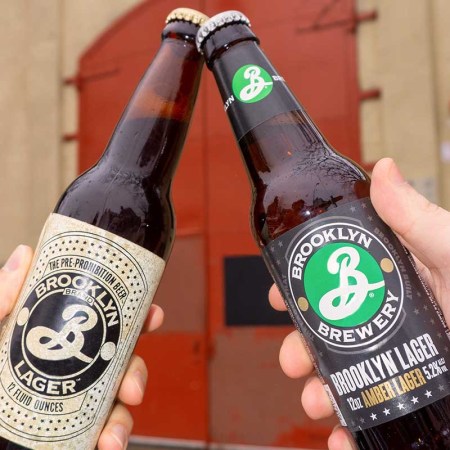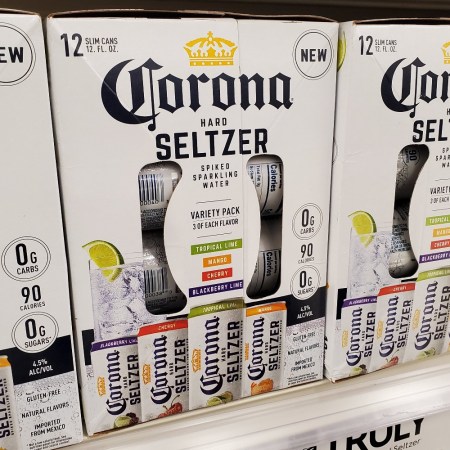Craft beer is dead. Long live craft beer.
So goes the state of American craft brewing.
Because as quickly as a craft brewery goes major, somewhere — probably in Logan Square — a small, fresh upstart waits to take its place.
How does a man keep pace? By reading October, the new digital mag on beer from Pitchfork and Good Beer Hunting’s Michael Kiser.
If you drink beer, you probably know Kiser. He’s the man behind Uppers and Downers, the festival of coffee beers. His website, Good Beer Hunting, was named Saveur’s 2013 and 2016 Drinks Website of the Year. He was one of Imbibe Magazine’s people to watch in 2016. He’s also the owner of a very impressive beard.
We sat down with Chicago’s beer writer-in-residence for an illuminating discussion on the future of craft beer, the state of Windy City brewing, and why you should be bookmarking his latest project.
InsideHook: So. Tell us more about October. What’s behind the name?
Michael Kiser: Historically, beer is tied to seasonal shifts. And thousands of years later, it still is. October’s name is meant to capture that feeling, especially since the fall months bring us a wide variety of flavors and activities from the celebration of a harvest time. In 2016, the metaphorical pantry has never been as stocked as it is now with so many unbelievable beers. We want people to feel like they can hunker down with a great beer, and a great read, and settle in for a season with us.
IH: As a beer writer (and a beer drinker), what lessons have you learned since starting Good Beer Hunting in 2007? What’s changed since?
MK: The writing I now engage in on GBH, along with our core team there, has naturally drifted into the higher-level criticism and philosophy of where the beer industry is going. And we bring that to life by telling the personal and business stories we find most progressive or indicative of that future. So GBH’s voice — through our photography, writing, and podcast — has sort of merged with the voice of the industry in many ways. We write from the inside out now.
That’s very different than October’s M.O. October is meant to reflect the voice and aspirations of the drinker. With so many exciting things on the shelf, and so many great places to visit, we want October to resonate with people who maybe grew up in a world where craft beer was a default. Like kids who never knew a world without smartphones, the experience of beer in America right now is a fundamentally different thing than it was 5-10 years ago. And we think there’s a need for a voice that sees it that way — and can treat amazing beer as part of an exciting life in general, full of other great experiences like music, art, tech, adventure, etc.
IH: Just like (October’s parent site) Pitchfork does music, one of the site’s primary initiatives is an elaborate beer rating system. How does that system work? How does a writer go about rating a beer?
MK: October does this two ways. First, we let the reviewer find their own way in, through the act of writing. They talk about the beer’s context, its significance and its relevance to trends and whatnot. Then, with all that in mind, do they even like it? These reviews are captured with a simple “Can half full” kind of rating system. It’s meant to encourage readers to seek it out on their own terms, and compare experiences.
And then there’s the data pull from Beer Graphs that serves as an aggregate representation of what the world thinks of that beer, and the insights we can draw from that data. There’s wisdom in a crowd, of course, but there’s also value in the singular view of a writer.
IH: What’s the worst thing to happen to craft beer in the last, say, five years? The best?
MK: The worst has to be how dogmatic this otherwise open and innovative culture has gotten. There’s an old guard that’s just refusing to let go right now and it’s really a bummer to watch. These are the people that think there’s a right way to make an IPA, or that craft beer is some sort of exclusive club, or that big beer and little beer can’t share interests. I’ve been in this industry for 10 years, much longer than some, much less than others, and I continue to gravitate towards anyone that remains open and adaptable to the future, whoever they are.
The best thing to happen to craft beer is that it simply became the new “beer.” I don’t think we lose any of the profound uniqueness of what made craft “craft” through that transition, but what we gain is immense. People who are coming of age and drinking beer now never knew a world without craft beer. And they don’t carry the burdens of that political fight. Instead, they look at a beer for what it is, where it came from, who made it, and factor in things like local, freshness, flavor and any number of other personal priorities that influence their drinking decisions. I think that’s how beer wins in the end. And those are the kind of people I want to drink with.
IH: What defines craft beer these days? Because it’s not locality now, is it?
MK: I think craft beer wins when we have a customer who cares as much about what’s in the bottle as much as they do about who and what’s behind it. I don’t think it’s a choosing-sides thing anymore between big and little. There are a host of large brewers that are as exciting as anything happening at the local level right now, and there’s nanos who are getting their products all over the country by any means necessary. The whole construct has sort of fallen in on itself in a really freeing way.
Photo: Half Acre Brewery
IH: What’s Chicago’s place in the brewery world? How are we staying relevant?
MK: We remain one of the most-distributed-to markets in the world. And that means that brewers here are pushed to find a unique conceptual space to brew in. So we’ve seen some really weird and unprecedented breweries open here like Off Color, Whiner and 5 Rabbit. We’re still a big bourbon barrel-aging town, but almost everyone is these days, so we don’t really have a style-specific identity. However, because of Siebel and Cicerone, we do have a bit of an intellectual center in the brewing world.
IH: Which players in Chicago brewing scene are you paying the closest attention to at the moment and why? Any beers or collaborations you’re looking forward to?
MK: Off Color continues to make some of my favorite beers, from their Kottbusser beer called Scurry, their Gose beer called Troublesome, to some of their mixed-culture beers like Papillion and their Eeeek! High Life collaboration. Half Acre makes my favorite hoppy beers, hands-down. Metropolitan’s German-style lagers (they refuse to change) are fundamental to drinking in Chicago. 5 Rabbit is quietly making some of the most inventive beers in the country with Latin-inspired ingredients.
IH: Cool, what’s next? What do you see as the future of craft beer?
MK: The science of brewing is getting a major investment right now from breweries big and small. We’re going to see those breweries who invest in LABS, education and quality control separate from the crowd pretty quickly. At the same time, more esoteric ventures in the artisanal realm keep producing new ideas that the science hasn’t caught up with yet. Just look at this interview GBH did with Chris White of White Labs this week. Yeast science is bonkers right now. It’s like we just discovered how vast the galaxy is.
Main Photo: Matthew Gilson
This article was featured in the InsideHook Chicago newsletter. Sign up now for more from the Windy City.





















